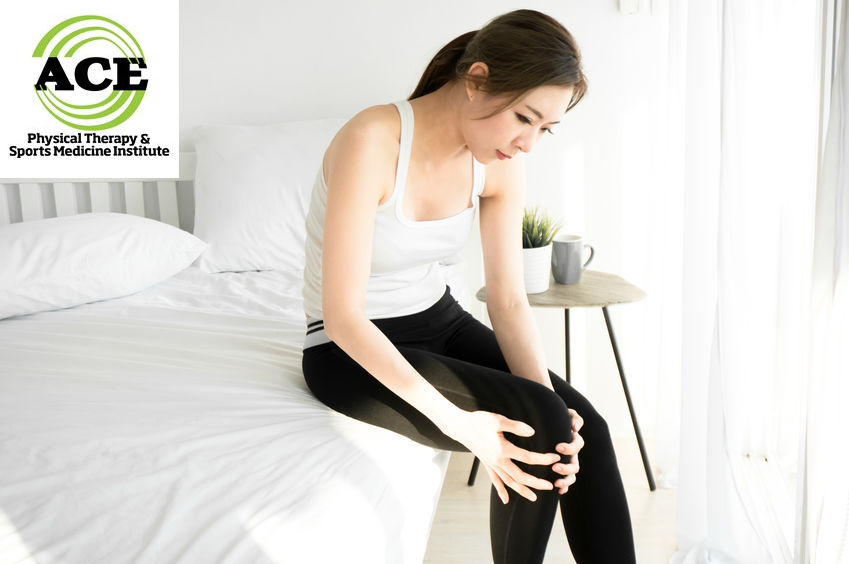AN OVER-LOOKED CAUSE OF ANTERIOR KNEE PAIN

Tid Bits of Info
- The IFP is known as Hoffa’s fat pad and first discovered and named in 1904.
- Impingement of the IFP is more common in women.
- Adequate hip strength is critical to ensure proper patellofemoral joint mechanics.
- The IFP is lies below the patella and behind the patella tendon.
- If you have pain in the front of your knee, seek the advice and treatment from a Physical Therapist.
Every day patients visit healthcare providers in search of relief from knee pain. The knee joint depends on the interaction of bones, ligaments, tendons, and cartilage. An injury in any of these areas can reduce movement and cause pain. Anterior knee pain alone has a wide range of causes and many times the symptoms overlap, making it difficult to define the source of the problem. Some of the most common diagnoses include patellofemoral malalignment, chondromalacia, and patella tendinitis. Infra-patella Fat Pad (IFP) is an often over-looked cause. IFP can be treated through conservative management over time.
The knee joint bears our weight even as it bends, straightens, twists, and even rotates. The complex movement of the joint allows us to run, jump, walk, spin, and move in a variety of ways. Most of the time we don’t think about the knees until they hurt. Continual anterior knee pain can be debilitating. Healthcare professionals who treat musculoskeletal injuries spend time assessing the patient and learning the various symptoms of anterior or posterior knee pain before offering a diagnosis. Many times the symptoms that are present resemble each other and a clear, concise diagnosis is not always known at the beginning of the rehabilitation process.
The Infra-patella Fat Pad (IFP) is located inferiorly (below) to the patella and sits inside the capsule and behind and around the patella tendon. It is mobile and moves as the patella (knee cap) moves up and down the groove of the femur (trochlear groove) during flexion and extension. It has a rich blood supply and is innervated with nerves which relay a pain signal if the IFP is impinged during the normal motions of the knee. The IFP controls the amount of friction and pressure that is applied to the anterior knee structures during normal motions. When the knee flexes, the IFP moves posteriorly and superiorly in the groove and helps to stabilize the patella. During the motion of extension, the IFP moves anteriorly to make room for the femur, tibia and patella.
There are two primary categories of injuries that occur to the IFP. The structure can get inflamed or impinged. In both instances the symptoms that occur are usually a result of cumulative damage to the structure. Direct trauma and/or cumulative micro-trauma can cause the inflammatory process to begin and produce hypertrophy and eventually fibrotic changes to the IFP. Impingement of IFP can occur as it moves during knee motions. It can be impinged in the groove (anterior / inferior joint space of the tibiofemoral joint) or along the lateral aspect of the patellofemoral joint. In both instances, the repetitive micro-trauma leads to inflammation and pain. In more rare instances, the IFP can be damaged during an arthroscopic procedure and an iatrogenic condition occurs due to scar tissue at the site of the surgical portal.
Symptoms that present with IFP involvement are similar to nearly every other “anterior knee” pain condition. The use of a MRI can produce a more definitive diagnosis and clarify if the IFP is the structure that is causing the pain. The symptoms are often described as a “burning sensation” in the front of the knee and along the sides of the patella tendon. The involved knee will hurt on stairs, during prolonged flexion or when the knee is hyper-extended.

Treating this condition is not easy but conservative management is usually successful although the positive results might take several months to resolve the symptoms. The goal of the treatment is to restore “normal” patellofemoral joint mechanics. This process has to address the entire kinetic chain. The rehabilitation process must include stretching, strengthening and neuromuscular re-education of the entire core and lower extremity.
Seeking the advice and treatment of a Physical Therapist is wise if you are suffering from anterior knee pain. These licensed professionals can evaluate and treat you. They will design a treatment routine that is designed just for your condition and it will be thorough.
The IFP can cause anterior knee symptoms that can limit someone’s function due to the intensity of the pain. These symptoms can be treated successfully in most instances but it takes a long time. The mechanics of the patellofemoral joint must be corrected to reduce the irritation on the IFP.
























